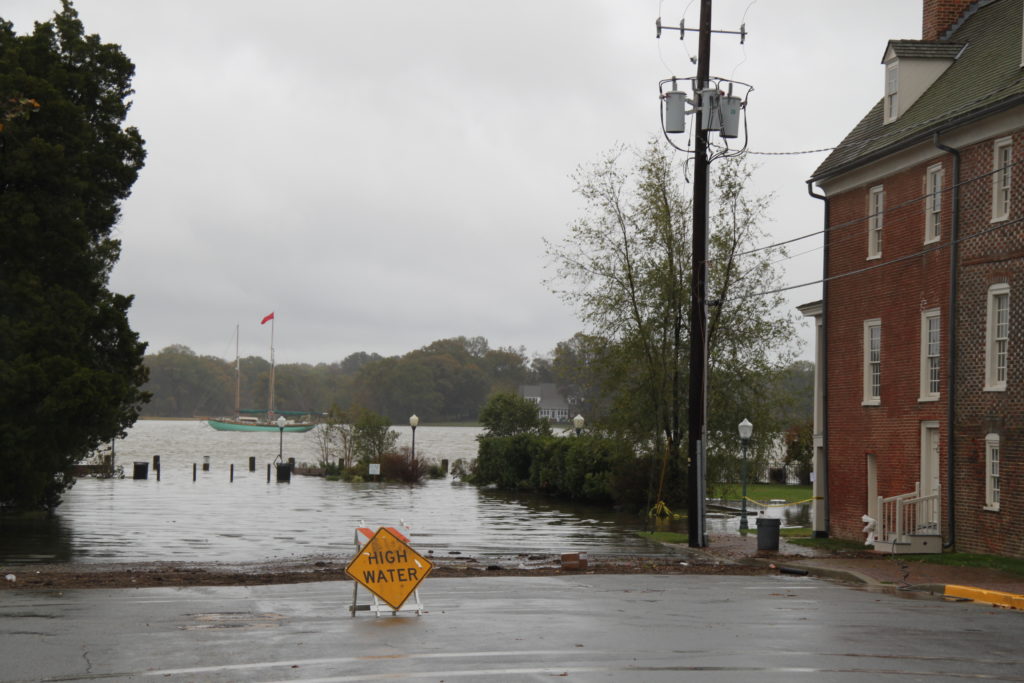Property Values Will Go “Underwater” Before Going Under Water

Property can go “underwater” temporarily, permanently, or figuratively in anticipation of actual flooding
How long before a particular coastal area goes ‘underwater’ is a question I get asked all the time. I like to explain that there are essentially three ways that property will go underwater: temporarily, permanently, or figuratively in anticipation of actual flooding.
The temporary flooding is most dramatic, like the typical storm surge, with hurricanes being the powerful version. We all have seen images of shorelines breached during named storms like Katrina, Sandy, or Matthew. It is quite unpredictable as a major storm could spin up on short notice, in most coastal areas. Such flooding from storm waves, “surge” or even heavy rainfall events, soon recedes usually within hours. Such weather events, or “acts of god” are something we have always lived with. They can have a modest effect on property values, particularly if they occur frequently.
Another type of temporary flooding these days follows the pattern of extreme high tides, often referred to as “king tides.” These above normal water levels on the ocean, in bays and up tidal rivers and waterways are variations in the daily ups and downs, primarily due to the relative position of the sun and moon, exerting gravitational pull on the oceans, causing a tidal bulge. Such extreme tides are totally predictable by location, height, and to the minute since they follow the roughly nineteen year tide pattern that has been observed for centuries. Such tidal flooding recedes in less than an hour. The problem is that their patterns or high water marks are creeping higher and higher, breaking all records of normalcy going back centuries. The change agent for the tides rising higher and higher, is rising sea level.
Sea level is creeping ever higher, decade by decade, driven largely by the melting of the glaciers and ice sheets on land. The phenomenon is accelerating due to the warmer temperature, particularly in the High Arctic. Rising sea level is now unstoppable, due to the warmer oceans. Globally the sea is about one and a half degrees Fahrenheit (one degree Celsius) warmer than it was a century ago. That excess heat will certainly melt more ice, causing sea level to rise.
Thus we need to consider property going underwater temporarily in the traditional way with storms, being different from property going underwater permanently due to rising sea level––permanently as in thousands of years. We have great trouble accepting this because sea level has never been higher for all of human civilization. In fact, the last time that sea level was higher than now, was 120,000 years ago, when the ocean was about 25 feet (7 m) higher. Because of the excess heat stored in the sea, the polar ice will almost certainly melt, eventually raising sea level back to that height. The question is how many centuries that will take and that depends on how warm the planet gets.
In addition to the distinction between land or buildings going underwater temporarily or permanently, there is a third way that real estate will go “underwater.” It can and will go underwater in the sense of its value. Here I use the term figuratively, in the common use way that any asset can be “upside down” in terms of what we have invested in it, and what the market deems that it’s worth. Due to rising sea level, there is a powerful, but not-so-obvious effect on property values that is quite different from physical flooding, both the temporary from storms and high tides, and the long-term literal inundation from rising sea level.
This third form of property going underwater is something I call “anticipatory flooding.” As an example, look at the house in the photo above. It is not yet flooded. It’s over a hundred years old. But in recent decades the extreme high tides, and flooding from irregular storms keep getting closer as shown here. It is starting to affect the perception of its value due to the risk or danger of flooding. This subtle situation is happening in coastal communities all over the world. Streets are flooding further and more often. As the flooding creeps higher and higher it is starting to affect perceptions of real estate value. Few talk about it, but it is very real. The discounting of value will get greater as the fact that rising sea level is now unstoppable and accelerating becomes more widely recognized. This could happen rather quickly as public awareness increases about the increased flooding and the increasing rate of polar ice melting.
Thus it is useful to think of real estate values going underwater three ways: 1) Temporarily due to weather or extreme tides. 2) Permanently flooding as sea level reaches higher and higher, breaking records for thousands of years. 3) In terms of property value, in-anticipation as the steady march of the high water mark, ominously gets higher and higher. These three different types of “going underwater” need to be understood. Each will have real effect on the value.
Where I use “permanently” above it is used in the sense of centuries or thousands of years. In order for global sea level to start falling, the planet will have to get cool enough for the ice sheets and glaciers to start expanding again. With the level of greenhouse gases and the warmer oceans, that can not happen in the near future.
Next week I will explain a related but different concept: why properties relatively far inland are often more vulnerable to going underwater than those on the shoreline. To be sure to get that, please consider signing up for my weekly newsletter “Sea Level Rise Now” www.sealevelrisenow.com
